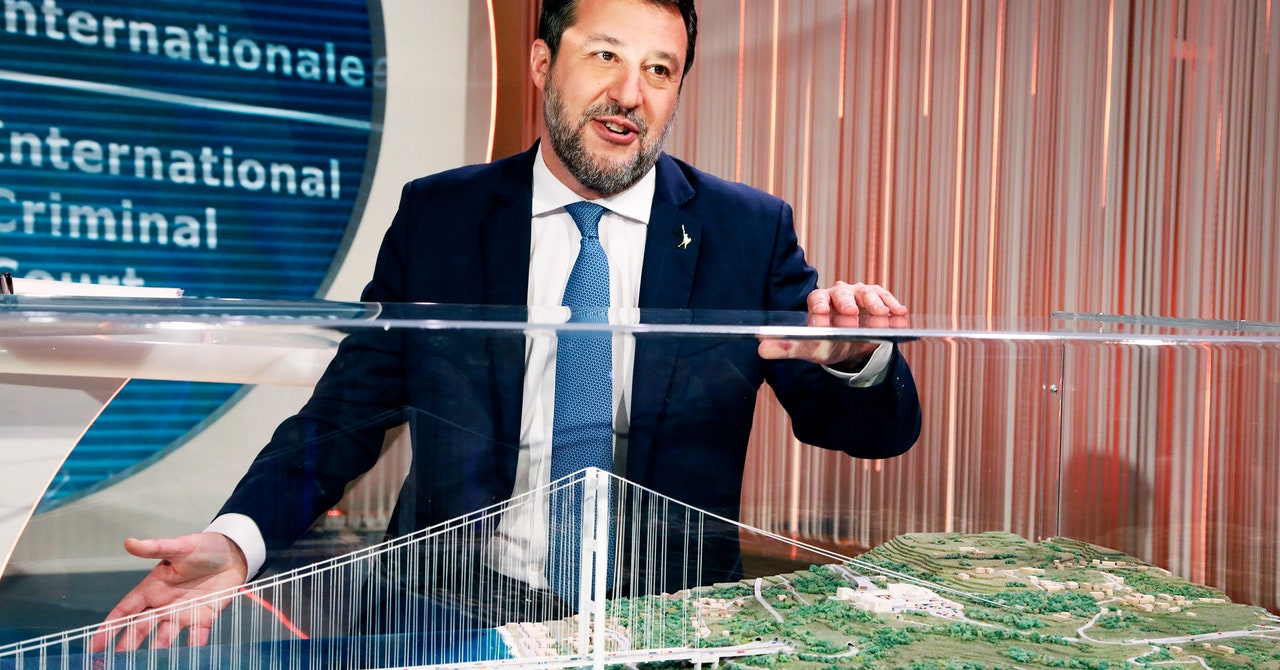Berlusconi was re-elected as Prime Minister in 2008 and revived the project, which was re-approved three years later, although the price had risen from €6.16 billion ($6.72 billion) to €8.5 billion. But soon after, in the midst of an acute eurozone debt crisis, Berlusconi lost his majority and resigned. His successor, Mario Monti, a respected technocrat, canceled the project for the last time in 2013.
Now the same project has been revived by the current government, which passed a decree in mid-March that cleared the way for the construction of the bridge. This time it will be defended by Matteo Salvini, deputy prime minister and leader of the populist League party – with support from Berlusconi, now 86, who wrote: “They won’t stop us this time” in an Instagram post on the day it decree was signed.
One of the reasons the project continues to be revived is that so many people are taking advantage of the work to plan it, said Nicola Chielotti, a lecturer in diplomacy and international administration at Loughborough University in London: “They are constantly spending money on even if it never happens, and there are some interest groups that are only too happy to claim that money.”
Salvini himself has acknowledged that “it is cheaper to build the bridge than not to build it.”
Another problem, Chielotti adds, is that the project is a useful political pawn for a government that has so far stalled on some key election promises, such as tax reform and an aggressive stance on international finance.
But the project’s strong politicization — which has led mainly to support from the right and opposition from the left — could also be a case of “infrastructure populism,” Angelini says. “The rhetoric surrounding the bridge oozes nationalism,” he says, “and the idea is seen as a symbol of Italy’s greatness, or ability to build a bridge longer than anyone has ever done.”
The current design for the crossing is a single-span suspension bridge with a length of 3,300 metres. That’s 60 percent longer than Turkey’s Canakkale Bridge, currently the longest suspension bridge in the world, spanning 2,023 meters. With pylons reaching 380 meters high, the bridge over the Strait of Messina would also be the highest in the world in terms of structural height, enclosing France’s Millau Viaduct, which is 342 meters high. It could carry 6,000 road vehicles per hour and 200 trains per day, and since the span would be 65 meters above the water, shipping traffic could pass under it undisturbed.
Train travel time between the island and the mainland – currently about two hours including the ferry journey – would be reduced to under 10 minutes, bringing the nearly 5 million people who live in Sicily much closer to the rest of Italy.
Earlier plans were for three spans, Muscolino says, with two pylons built into the sea, each sunk between 80 and 100 meters below sea level. These would have been unworkable given the strong currents in the strait and would have presented a risk to shipping.

